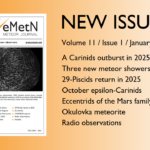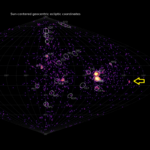Meteor Activity Outlook for 16-22 September 2017
During this period the moon will reach its new phase on Wednesday September 20th. At this time the moon will be located near the sun and will be invisible at night. This weekend the waning crescent moon will rise just before dawn and will not pose any problems to those trying to view meteor activity.
Read More


